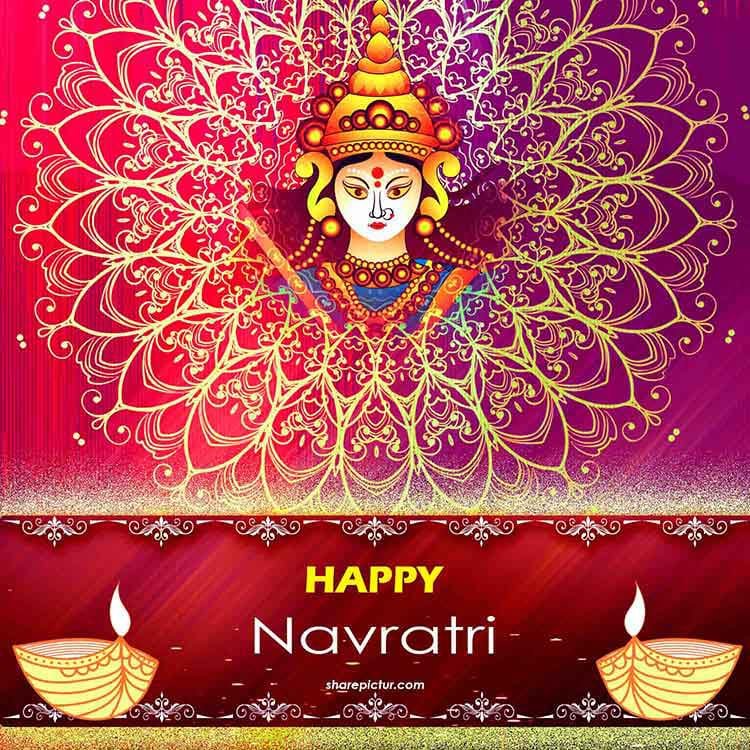FESTIVAL OF JOY AND HAPPINESS
Navratri, a nine-night festival dedicated to the worship of the Hindu goddess Durga, holds a special place in the hearts of millions around the world. It is a time of vibrant celebrations, intricate rituals, and unwavering devotion. In India, Navratri is celebrated four times in a year:-
1. Sharidya Navratri ( शारदीय नवरात्रि)
2. Chaitra Navratri ( चैत्र नवरात्रि )
3. Magha Gupta Navratri ( माघ गुप्त नवरात्रि)
4. Asadha Gupta Navratri ( आषाढ़ गुप्त नवरात्रि)
Out of four two are very prominent in India i.e. Shardiya Navratri and Chaitra Navratri.
While I am writing this blog Chaitra Navratri is celebrating in India. On the first day of Navratri Pitcher( कलश) is established in every home and barley( जौ)is grown in any utensils which are made of clay.
According to Hindu mythology it is believed that Barley was the first crop that was grown by any human on this Earth.
Let’s delve into the significance, customs, and festivities surrounding this auspicious occasion.
The Significance of Navratri festival: Navratri, which translates to “nine nights” in Sanskrit, symbolizes the triumph of good over evil. It is believed that during these nine nights, Goddess Durga battled and defeated the demon Mahishasura, restoring peace and harmony to the world. Each day of Navratri is dedicated to a different manifestation of the goddess, known as the Navadurga, highlighting her various divine qualities and powers.
1.Shailaputri
2. Brahmacharini
3.Chandaghanta
4.Kushmanda
5. Skanda Mata
6. Katyayani
7. Kaalaratri
8.Mahagauri
9. Siddhi Datri.
Customs and Traditions of this festival: Navratri is celebrated with great fervor and enthusiasm across India and among Hindu communities worldwide. One of the most prominent customs is the performance of Garba and Dandiya Raas, traditional folk dances that involve rhythmic movements and colorful attire. These dances are not only a form of worship but also a joyful expression of community spirit and cultural heritage.
Another integral aspect of Navratri is fasting, where devotees abstain from consuming certain foods as a form of purification and penance. Some choose to observe strict dietary restrictions, while others opt for lighter meals or specific fasting recipes made with ingredients such as buckwheat flour, sago, and fruits. People also avoid non- veg while Navratri is going on and shift their diet towards vegetarian foods.
Devotees also visit temples dedicated to Goddess Durga, where elaborate rituals and prayers are conducted throughout the nine days. The atmosphere is filled with the sound of devotional songs, the fragrance of incense, and the sight of beautifully adorned idols, creating a sense of reverence and spirituality.
The Triumph of Light: The final day of Navratri, known as Vijayadashami or Dussehra, marks the culmination of the festival. It commemorates the victory of Lord Rama over the demon king Ravana, as depicted in the epic Ramayana. Effigies of Ravana, along with his brothers Meghnad and Kumbhakarna, are burnt in dramatic displays symbolizing the triumph of good over evil.
Navratri also holds significance beyond its religious and cultural aspects. It serves as a reminder of the importance of righteousness, inner strength, and the indomitable spirit of the human soul in overcoming adversity.
Conclusion: Navratri is not merely a festival; it is a celebration of faith, unity, and the eternal battle between light and darkness. As devotees come together to worship Goddess Durga and honor the divine feminine energy, Navratri serves as a beacon of hope and inspiration for all. In its colorful rituals, joyous festivities, and timeless traditions, Navratri reaffirms the enduring values that bind humanity together in love and devotion. The festival of Navratri is not only the festival for INDIANS to celebrate, but also an emotion which connects millions of people. people of different caste, color, language unite and celebrate this festival with joy and happiness.

